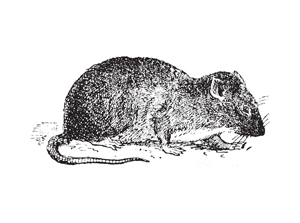Return of the Plague?
By Chris Williams on January 14, 2014.

Bubonic plague is commonly spread through the bites of fleas that feed and live on infected rats.
Bubonic plague in Madagascar has always been a problem. Every year there are more than 100 cases of bubonic plague, a bacterial infection spread by rat fleas, which killed more than one-third of the Europe’s population in the 14th century and more than 50 percent of the people in China. Bubonic plague is commonly spread through the bites of fleas that feed and live on infected rats. The plague bacillus then reproduces and produces a festering wound known as a “Bubo.” This weeping welt grows, becoming enlarged with bacteria.
Any contact with the contents or fluid from the bubo leads to further infection. Without treatment, the infected person eventually dies from massive organ failure due to the aggressive nature of the bacteria. In medieval times, infected bodies were used as weapons, placed in wells, or otherwise used to contaminate enemies. As worldwide commerce increased with the use of ships, infected rats and fleas were transported throughout the known world. Pneumonic plague, caused by the same bacillus, forms in the lungs of infected persons. Bacteria become airborne as the infected person coughs. Transmission from airborne droplets from one person to another makes the spread of the bacillus difficult to stop. An infected person may not know that they carry the disease, as symptoms are slow to develop. According to health officials in Madagascar, more than 260 cases of plague were noted this year alone, with more than 60 deaths. Plague thrives in overcrowded, filthy conditions. Prisons in Madagascar seem to fit the bill. Roaches, bedbugs, and rats also thrive there. Despite minimal control efforts, rodent and insect populations are ever threatening. People who visit prisoners, or prisoners that are released to their families may become infected unknowingly and/or lack the ability to get treatment at all, even if they are aware of the infection. As the disease develops, it is easily spread to those nearby. If action is not taken by local authorities, a local epidemic is possible.
Plague is treatable with available medicines, but outlying rural areas lack modern medical facilities and healthcare workers. Although we live in a modern world, the threat from this ancient pathogen should not be overlooked. Travelers heading to places off the beaten track should contact the World Health Organization and the Center for Disease Control to get the latest recommendations regarding immunization and precautions to be taken. This situation is just one more example of how insects continue to shape our world. Flea and rodent control is an important part of modern living, and Pest Control Professionals can help you live a safe and healthy life.